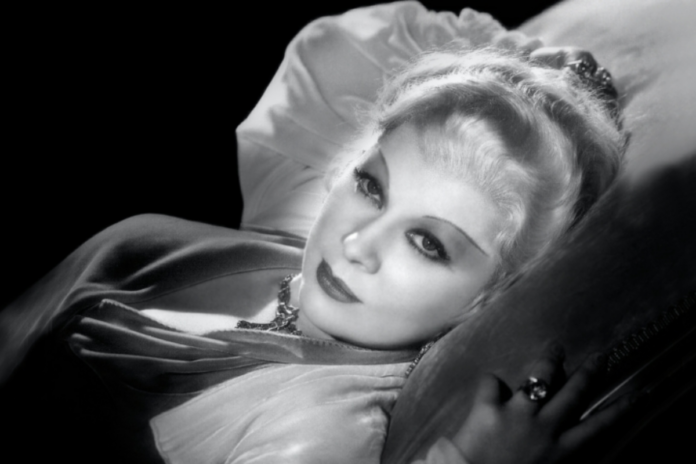In the 1930s, Hollywood faced a notable transformation as Catholic agencies endeavored to redefine the film industry, instilling a cultural product that showcased exemplars of pro-Catholic sexual virtues. Renowned author Alexander McGregor, in his work “The Catholic Church in Hollywood,” delves into the intricacies of this phenomenon, unraveling the methods and motivations behind the Catholic Church’s efforts to reshape the cinematic landscape.
This period witnessed a distinct push for films that aligned with and promoted Catholic values, illustrating a significant intersection between religion and entertainment during a pivotal era in Hollywood’s history.
Catholic Critique Of Hollywood’s Moral Landscape
In response to the Mae West film, “She Done Him Wrong,” Daniel Lord, the Catholic writer responsible for drafting the influential Production Code in 1930, voiced his disapproval, labeling it a depiction of ‘degenerate’ women. Lord, who later played a crucial role in establishing the Production Code Administration (PCA) in 1934, melded American patriotism with Catholic morality. He called for a shift in Hollywood’s focus, urging the industry to produce films centered on ‘business, industry, and commerce’ rather than what he deemed morally questionable content.
During this period, before the formal establishment of the PCA under the leadership of Joseph Breen, Lord lacked a centralized body to enforce these moral standards. Undeterred, he encouraged American Catholics to boycott “She Done Him Wrong.” Lord’s efforts underscore the intersection of religious values, cinematic content, and the evolving landscape of moral governance that would come to define Hollywood’s Golden Age.
Catholic Church’s Crusade Against Hollywood’s Moral Landscape In The 1930s
At the Bishops Annual Conference in Washington DC, in 1933, Daniel Lord presented a detailed list of 133 films released over a six-month period, highlighting what he perceived as moral transgressions in Hollywood.
Lord pointed out 26 instances of illicit love, 13 seductions, 12 planned and attempted seductions, two depictions of rape, one of incest, 18 characters living in adultery, seven planning to commit the sin, three featuring prostitutes as central characters, and 25 films portraying scenes and situations of indecent or obscene character.
Lord, however, did not disclose the methodology behind his research, leaving the origin of these statistics unclear.
The findings indicated a prevailing trend in Hollywood, where sexuality and sensuality were central themes in films during this period. Whether Hollywood aimed at championing sexual equality for women, reflecting societal norms, or simply catering to audience demand, by the end of the 1930s, Catholic agencies successfully influenced Hollywood’s content.
This transformation resulted in a dominant paradigm where women were portrayed as either subservient or faced consequences, both earthly and divine, for their actions.
This marked the beginning of a new era shaped by the Production Code Administration (PCA) and the Legion of Decency, solidifying the Catholic Church’s impact on Hollywood’s moral narrative.
The Battle For Moral Standards: Breen, the PCA, and Hollywood’s Complicated Relationship
In 1932, Joseph Breen openly criticized America’s secular cultural producers, accusing them of being willing to showcase explicit content under the guise of art. Despite this strong stance, the practical approach of Breen, the Production Code Administration (PCA), and the Legion of Decency didn’t outright ban the portrayal of ‘degenerate’ women. Instead, they strategically utilized depictions of adultery and illicit sex in their cultural battle against modernity. The explicit representation of immoral behavior was a cautionary tale, exemplifying Breen’s concept of ‘compensating moral values.’
Essentially, as long as the immoral female characters faced suitable consequences, the dramatic use of sexuality and sensuality was deemed acceptable for educational purposes. Breen made this perspective evident in his critique of the 1934 film, Ecstasy, emphasizing the need for compensating moral values. The Legion of Decency similarly assessed various films on their moral merits, refusing classifications to those lacking compensating moral values, such as Chinese Den (1940), Lady in Distress (1941), and Girl from Maxim (1941).
To ensure the incorporation of compensating moral values, Breen’s PCA scrutinized film scripts before production, while the Legion’s reviewers, known as ‘Looram’s Ladies,’ rigorously assessed the final product. In 1934 alone, Breen’s staff provided over 27,000 opinions on the content of films, emphasizing the meticulous efforts to instill moral standards within Hollywood’s cinematic landscape.
Catholic Influence In Hollywood: The Role Of Women In Shaping Moral Standards
In Hollywood’s pursuit of Catholic paternity, women played a crucial role in lending legitimacy to the cause. The Legion of Decency enlisted Catholic women in their 20s, known as Looram’s Ladies, to meticulously review films. To qualify, potential employees underwent a six-month tutoring period with a seasoned reviewer. As part of their training, candidates had to analyze a film independently and justify the Legion’s rating, demonstrating their understanding of Catholic moral standards.
This process essentially served as an American Catholic culture school, emphasizing the importance of sanctity and consistency in film reviews. To shield the female reviewers from potential corruption, they were required to read sobering literature such as the American Catholic review manuals, including “How to Judge the Morality of Motion Pictures” and “A Popular Guide to Right Standards in Motion Picture Entertainment.” These guides cautioned against the emotional impact of films on women, acknowledging their perceived vulnerability as the ‘weaker sex.’
Guardians Of Morality: Legion Of Decency’s Vigilance In Evaluating Film Content
Specifically addressing partial nudity on screen, the manuals warned of the ‘serious moral danger’ posed to viewers, particularly when exposed in appealing circumstances. The literature also provided guidance on evaluating the screen’s depiction of emotional sympathy for moral sins, presenting contrasting film plots (Picture A and Picture B) to instruct reviewers on Catholically appraising the moral content of the scenes. This comprehensive training aimed to ensure that the Legion’s reviews aligned with Catholic principles and protected the moral integrity of its female reviewers.
The film avoids explicit details but advocates the belief that if a man’s wife is selfish and unsympathetic, he is morally justified in seeking love and happiness with another woman. In essence, the movie endorses and rationalizes adultery. Rather than relying on ethical reasoning, the film employs emotional appeal to garner support for the protagonist, leading many viewers to sympathize with him and approve of his actions.
This emotional manipulation may sway individuals to reconsider their previously held convictions, suggesting that under specific circumstances, adultery can be deemed acceptable. Such a stance presents a distorted moral standard, deviating significantly from conventional beliefs.
Young Romance Deferred: Cinematic Narratives In ‘Picture B’
Picture B revolves around a ‘young romance.’ Due to certain circumstances, such as parental objections or financial constraints, the hero and heroine must postpone their marriage indefinitely. The guide goes on to explain:
They are young and firmly believe they cannot live without each other, choosing not to wait for marriage. This film, through its sympathetic portrayal, deceptively promotes the idea that sexual experience is the ultimate expression of true love. It advocates the notion that genuine lovers would be unwise to delay such experiences until marriage and suggests that pre-marital relations, under certain circumstances, can be forgiven. The attractiveness of the hero and the beauty of the heroine may lead the audience to empathize with and even endorse their actions. The film may persuade viewers that profound and sincere love justifies transgressions. Once again, this promotes a distorted moral standard, deviating entirely from traditional moral values.
Shaping Hollywood Morality: American Catholic Church’s Influence On Cinematic Virtues
Joseph Breen’s compensating moral values fueled and well-trained Looram’s Ladies supported the American Catholic Church in molding Hollywood’s cultural output to showcase exemplars of pro-Catholic sexual virtues, ensuring the rewarding of virtuous characters. At the same time, those embodying the Church’s interpretation of sinfulness, especially in matters of sexuality, faced appropriate consequences.
An illustrative example is the 1934 film “Baby Face,” where the heroine, Lilly, utilizes her sexual allure to ascend the social hierarchy. Starting as a speakeasy barmaid, she strategically engages with a series of respectable men, each more economically successful than the last, until she reaches the pinnacle of a New York skyscraper, the penthouse of her latest lover. However, in the film’s climax, Lilly is compelled to abandon her promiscuous lifestyle, resulting in the swift loss of her wealth and reputation. The compensating moral value of “Baby Face” dictates that a sexually aggressive opportunist must face retribution from the men she has exploited. Remarkably, the Production Code Administration (PCA) and the Legion deemed this stark humiliation of a desperate woman as a ‘happy ending.’
Screenwomen in the 1930s often met mortification or death if they dared to pursue an independent life, a trend exemplified by “Baby Face.” The film’s tagline starkly proclaimed, ‘She climbed the ladder of success: wrong by wrong!’ This narrative choice reflected the prevailing societal and moral norms of the time, as dictated and reinforced by the Catholic Church’s influence on Hollywood.
Restricted Narratives: Hollywood’s Treatment Of Female Sexuality In The 1930s
In the 1930s, filmmakers integrated the concept of female sexual liberation into films, albeit with a specific narrative agenda, while simultaneously prohibiting the representation of certain gender-specific topics like prostitution and abortion on screen.
The portrayal of what we might recognize today as the ‘modern woman’ was, in the perspectives of Joseph Breen and the Legion of Decency, framed as a fallen figure akin to Lilith, symbolizing corruption. Breen and the Legion considered the so-called ‘liberty’ or independence of this female archetype a corrosive force capable of eroding what they deemed traditional morality.
Also Read: This Is Uncanny: Number-play In Stanley Kubrick’s ‘The Shining’


